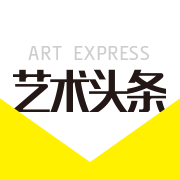
Retrospective of Video Art Pioneer Nam June Paik in Korea
2016-07-18 09:22:24 未知
The avant-garde television and video creations of Nam June Paik, the initiator of video art, are displayed in Korea at the Nam June Paik Art Center through February 5, 2017.
Curated by Hyunjeung Kim and Sun Young Kim, the exhibition “Point–Line–Plain–TV” spotlights the Korean-born artist’s achievements from the end of the 20th century to the early 21st century. It explores how Paik shook the visual art world, challenging viewers’ understanding of art by going beyond the traditional canvas.
Based on Wassily Kandinsky’s essay “Point and Line to Plain,” and subtitled “Contribution to the analysis of the pictorial elements,” the showcase aims to demonstrate and interpret how Paik established his basic and unconventional mediums to create art. The exhibition provides viewers with different perspectives into his thought process.
Paik is renowned for bringing the television into the realm of art for the first time. Such an interest was ignited when he met people from the broadcasting field and also encountered the equipment in the industry. He first exhibited 13 televisions as a piece of art in his debut solo exhibition “Exposition of Music – Electronic Television” in 1963.
The exhibition features two television works by Paik. The first, “Real Fish/Live Fish, 1982,” 1999, is comprised of two television screens. One TV reveals a real-time image of a fish, while the other possesses the actual real fish swimming inside. Viewers are invited to reflect on the significance of experiencing conceptualized time.
The second work is titled “Yule Gok,” 2001, part of Paik's “Family of Robot” series which portrays Yule Gok, the Confucian and politician from the 16th century, in the form of a robot. It is made up of 17 monitors showing various videos including a fan dance performance.
After being in contact with artists from the Fluxus movement, Paik further explored the idea of “time, space, audience participation, indeterminacy, and contingency” in his work. His performances and installations thus present the core elements of Fluxus. Exhibited in the show is one of Paik's works with Mary Bauermeister, a close colleague and Fluxus artist, titled “Piano and Letters.” It consists of a multitude of letters communicated between the two artists suspended from the ceiling, as well as scenes from a concert that took place in Bauermeister’s studio in early 1960. Underneath the dangling epistles lies a piano which was actually used during the concert all those years ago.
The Fluxus art movement consequently shaped Paik's outlook, leading him to embrace technology, including satellite transmissions, robots, and lasers. His installations, performances, and other works expanded the possibilities of creating art by exponentially expanding its very definition. Paik once said: “As collage technique replaced oil paint, the cathode ray will replace the canvas.”
“Point–Line–Plain–TV” will run through February 5, 2017 at Nam June Paik Art Center, Korea.
(责任编辑:张天宇)
注:本站上发表的所有内容,均为原作者的观点,不代表雅昌艺术网的立场,也不代表雅昌艺术网的价值判断。

 李铁夫冯钢百领衔 作为群体的早期粤籍留美艺术家
李铁夫冯钢百领衔 作为群体的早期粤籍留美艺术家 张瀚文:以物质媒介具象化精神世界
张瀚文:以物质媒介具象化精神世界 翟莫梵:绘画少年的广阔天空
翟莫梵:绘画少年的广阔天空 “纤维”提问2022:存在何“缓”?
“纤维”提问2022:存在何“缓”?
全部评论 (0)